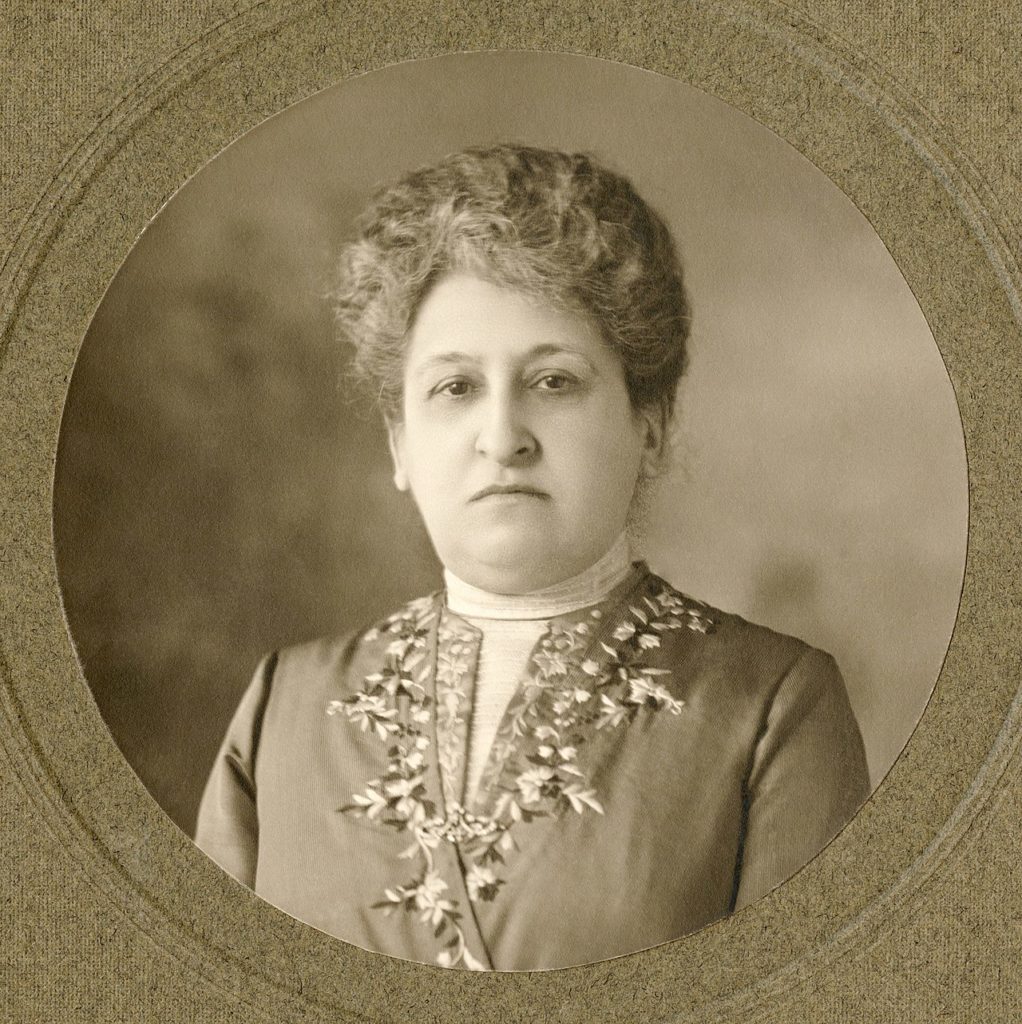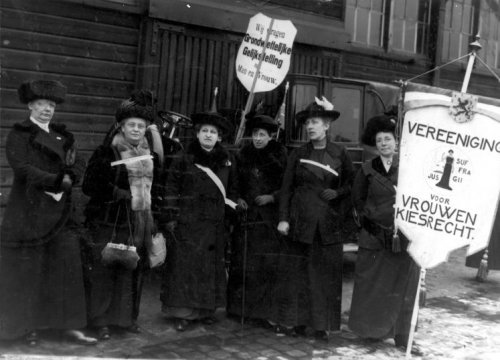How Women Fought For Suffrage in the Netherlands Posted by Sten on Mar 8, 2021 in Culture
It’s Internationale Vrouwendag (International Women’s Day) today! With the theme #ChooseToChallenge, this year’s Day emphasizes individual thinking and actions. And so I want to look at women’s suffrage in the Netherlands in this post, with at the helm Aletta Jacobs, one of the most famous political figures in the country. However, it’s not all rainbows and sunshine…
Challenging the Educational System
Aletta Jacobs was born in 1854, in a time when it was unusual for a woman to strive for a college education and a career. But that’s what Jacobs went for – and she became the first woman that successfully completed a studie (higher education). She wrote to Thorbecke, the premier (prime minister), to ask if she could study medicijnen (medicine). She even wrote him a letter on his deathbed to ask whether she could do her examen (exams), as it was required to get permission for this at the time. And he did.
And so, Jacobs became the first graduated female doctor of the Netherlands in 1879. That is an amazing achievement in and of itself! But she wasn’t happy with just that.
Challenging the Voting System
At the time, the Netherlands had censuskiesrecht (census suffrage). This system stipulates that you can vote if you pay a certain amount of belasting (tax). It follows from the idea that representation is given through taxation – so if you don’t pay taxes, you don’t deserve to be represented. The grondwet (constitution) did not specify that the kiezers (voters) have to be mannelijk (male).
In practice, however, women still did not vote. Men were the ones that brought income to the family, and even if a woman had work, her income went into the household income. This was used to represent the income that the man could use to show he had the right to vote.
Jacobs had an income of her own and wanted to zich verkiesbaar stellen (make herself eligible for election). But the rechter (judge) said no. While the law did not explicitly say that women couldn’t do this, it was the implicit geest (spirit) of the law.
This geest was put in black and white when the grondwet was changed in 1887. The so-called caoutchouc-artikel (“rubber” article) 80 of the new constitution explicitly stated that only men could vote. It reads:
“De leden der Tweede Kamer worden regtstreeks gekozen door de mannelijke ingezetenen, tevens Nederlanders, die de door de kieswet te bepalen kenteekenen van geschiktheid en maatschappelijken welstand bezitten en den door die wet te bepalen leeftijd, welke niet beneden drie en twintig jaren mag zijn, hebben bereikt.”
(The members of the Second Chamber are chosen directly by the male inhabitants, also Dutch nationals, that possess the characteristics of suitability and social wealth that are to be determined by the election law and that have reached the age determined by that law, which may not be below twenty-three years.)
So, you had to be a man, 23, and have certain characteristics of wealth. These characteristics, however, were not strictly defined. This allowed the electorate to expand in the following years with ever looser definitions of what these wealth indicators should be. The article earned its name thanks to this flexibility.
With this explicit inclusion that you had to be male, this article also sparked the beginning of many vrouwenbewegingen (women’s rights movements) and the first feministische golf (feminist wave).
In the first two decades of the 20th century, these bewegingen really got traction. And with amazing results: In 1918, women received their kiesrecht (suffrage).
But this was the passief kiesrecht (passive suffrage). This allowed women to zich verkiesbaar stellen. This led to the first female elected official in the Dutch parliament, Suze Groeneweg. Due to the kiesrecht being passief, however, her voters were all men.
Just a year later, in 1919, the grondwet was changed. The word mannelijk was removed, and so women got kiesrecht! 1919 is generally seen as the year in which the algemeen kiesrecht (general suffrage) became a reality in the Netherlands. And in 1922, then, women could vote for the first time in the Tweede Kamerverkiezingen (Second Chamber elections).
And while this is true for the country of the Netherlands, the kingdom lacked behind by a few centuries. 1919 is the year in which only some women could vote.
What about the overseas territories?
While Aletta Jacobs fought for algemeen vrouwenkiesrecht (general women’s suffrage), she did not include women of color. In fact, she was a strong proponent of the Dutch colonies remaining without suffrage.
At the time, the Netherlands still owned colonies in overzeese gebieden (overseas territories), including Suriname, Nederlands-Indië (Dutch East Indies) and the Nederlandse Antillen (Netherlands Antilles). For women in those parts of the kingdom, nothing changed in 1919. And it would take decades for any real change to come.
Women in Indonesia, former Nederlands-Indië, only got suffrage in 1945, in the Nederlandse Antillen in 1948 and in Suriname in 1963.
These differences are also still seen in the Dutch parliament today. While there is a push for more representation of women in the Tweede Kamer than the current 33%, the percentage of Afro-Dutch women (and men) is often forgotten – which currently is 0%.
It goes to show that feminism, racism and other social issues are not separate, but often go hand in hand.
Celebrating Internationale Vrouwendag
In the Netherlands, the day is celebrated with all kinds of events, most of which are online now due to the coronavirus. The theme for the Dutch day is Invloed met impact (Influence with impact). Participate yourself with the hashtags #InternationalWomensDay and #IWD2021.
How do you celebrate International Women’s Day? Let me know in the comments below!

Build vocabulary, practice pronunciation, and more with Transparent Language Online. Available anytime, anywhere, on any device.







